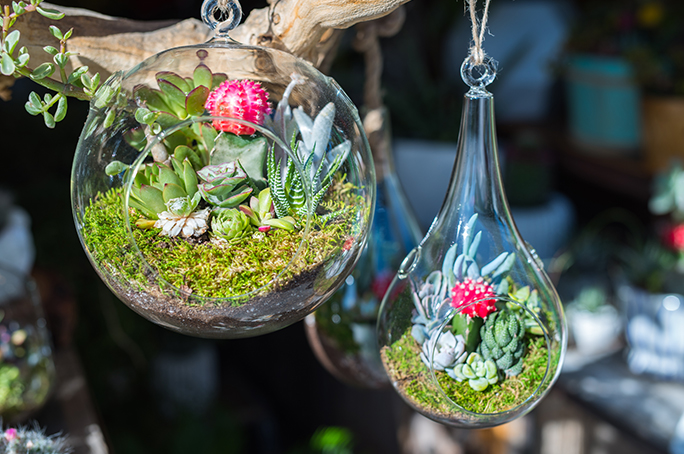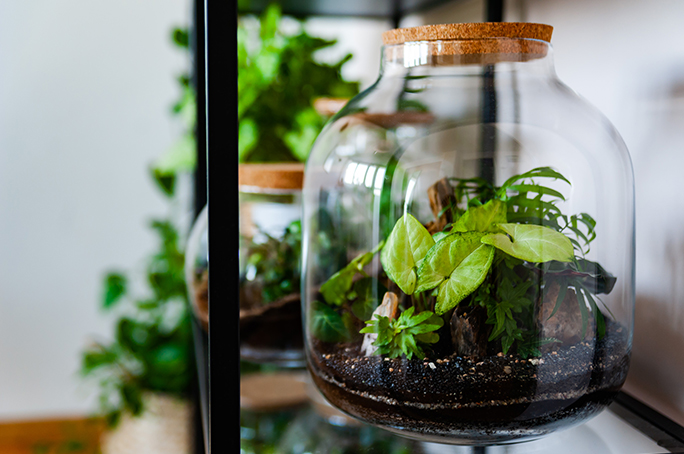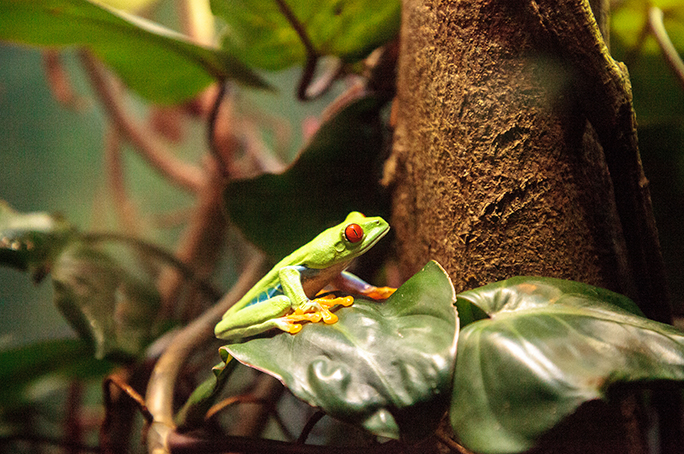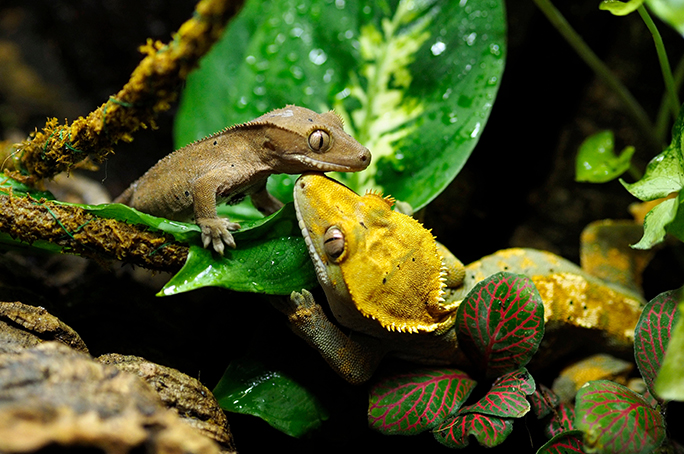Most of our green pets are native to the tropics and require high humidity which can be a hassle to maintain. In this case, terrariums can be the perfect solution.
Forget humidifiers—plants will take care of it on their own by evaporating moisture from the surface of their leaves, while the walls of the terrarium will help retain it. These walls will also serve as protection from drafts which are harmful to most plants. And if you have four-legged friends, the terrarium will protect your plants from getting chewed on, which is quite useful since animals tend to be curious and plants are often toxic.
Open Terrariums

There are two types of terrariums: open and closed. Open terrariums will generally have a pretty wide opening so that air can flow freely inside. Various succulents and cacti will be an excellent choice, as their size allows for an easy arrangement process and they don’t need too much humidity. These plants are generally undemanding in care but do require bright lighting, so it’s best to put the terrarium closer to a window. Avoid closed terrariums, as excessive moisture can cause succulents to rot and die. It’s also important to be mindful with your watering: avoid waterlogging at all costs and don’t let water get on the plants, as it’s the most common reason for rot.
Closed Terrariums

Closed terrariums usually come with a lid that partially or completely isolates the plants. In this case, go for moisture-loving plants like Pilea cadierei, Fittonia, mosses, and ferns. Warm and humid, draft-free air is optimal for their maintenance. Carnivorous plants, such as the sundew and the tropical pitcher plant, will also thrive in such an environment. The only exception to this would be the Venus flytrap—it’s often prone to rot and would feel best in an open terrarium. Of course, water isn’t all these plants need: don’t let your green pets go hungry, and feed them insects every now and then.
Vivariums

Other than plants, a terrarium can also serve as an excellent home for certain reptiles and amphibians, although in this case, it’ll be called a vivarium. Vivariums differ from terrariums because in this case, the animal will be the main star of the show, and plants are its backup dancers. Therefore, when designing a vivarium and choosing the right plants, you’ll need to put the animals’ needs first. For reptiles and amphibians, it’s important to install devices to measure and maintain the right temperature, light, and humidity required for them to feel comfortable. Also, unlike a regular terrarium, which can be of almost any size, a vivarium should be spacious enough for its animal inhabitants.
Vivarium Plants

When it comes to choosing a safe plant for a vivarium, Ficus takes the spotlight. The dwarf ficus (Ficus pumila) for example, would be our top pick. Next would be the bromeliads. They’re convenient to place on branches since in the wild, they like to attach themselves to tree bark. Ferns will feel at home, as they’re used to high humidity and low light, which are necessary for reptiles and amphibians.
Orchids will also feel welcome. These beautiful flowering plants are more demanding of their growing conditions but will definitely please your eyes during blooming. For the least fussy and low-light option, check out the jewel orchid (Ludisia discolor). The main rule to follow when it comes to the choice of plants is to pick the ones that need high humidity and can survive without bright light. This way, your terrarium will be beautiful and lush, while serving as the perfect home for its reptilian residents.
We hope this insight has inspired you to get creative and add more unusual plant decorations to your home!
